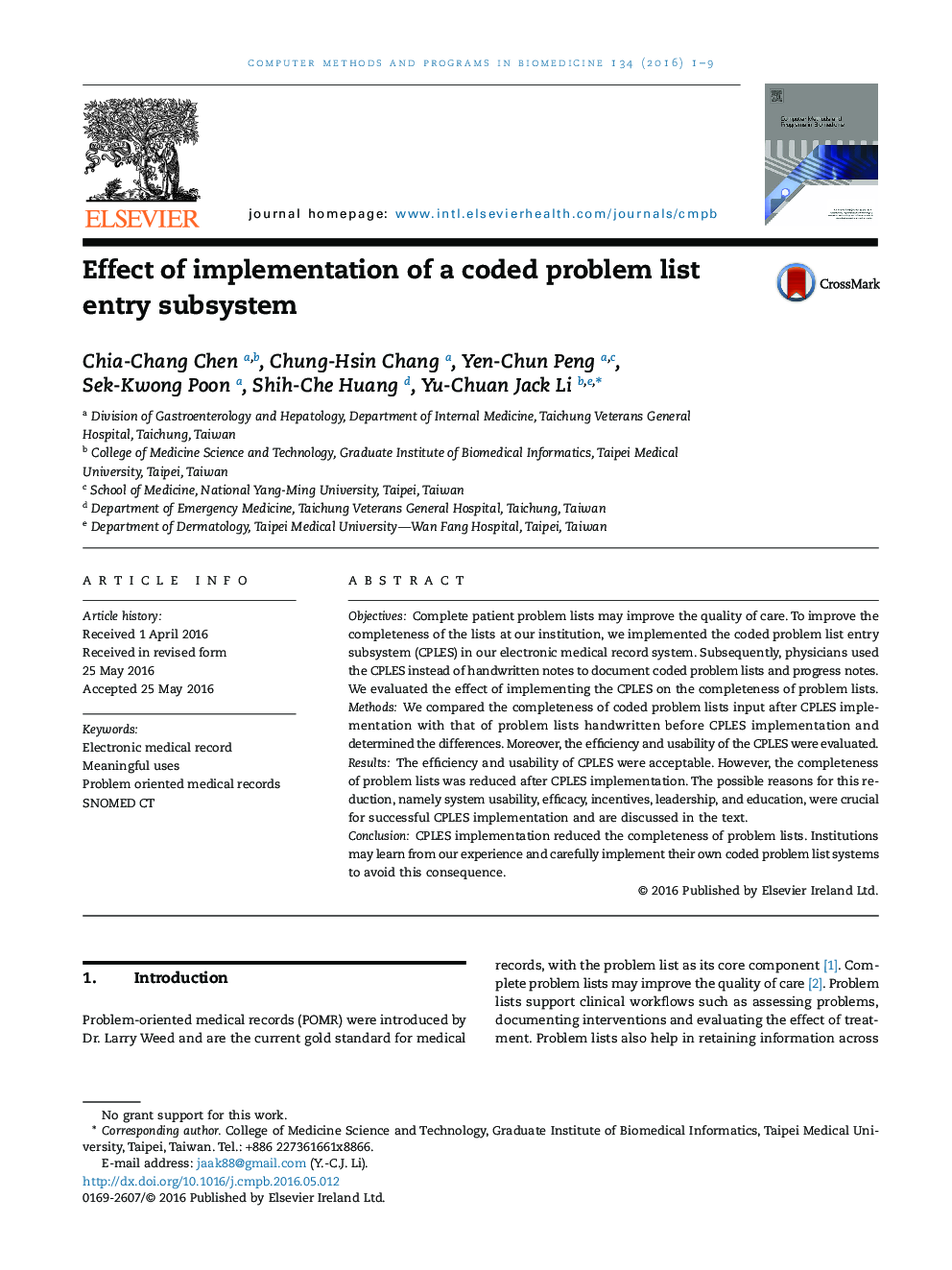| Article ID | Journal | Published Year | Pages | File Type |
|---|---|---|---|---|
| 466296 | Computer Methods and Programs in Biomedicine | 2016 | 9 Pages |
•We implemented the coded problem list entry subsystem in one medical center.•The physicians used this system instead of handwritten notes to document coded problem lists and progress notes.•We evaluated the effectiveness of this implementation on the completeness of problem lists.•The completeness of problem lists was reduced after this implementation.•System usability, efficacy, incentives, leadership, and education were crucial for successful system implementation and are discussed in the text.
ObjectivesComplete patient problem lists may improve the quality of care. To improve the completeness of the lists at our institution, we implemented the coded problem list entry subsystem (CPLES) in our electronic medical record system. Subsequently, physicians used the CPLES instead of handwritten notes to document coded problem lists and progress notes. We evaluated the effect of implementing the CPLES on the completeness of problem lists.MethodsWe compared the completeness of coded problem lists input after CPLES implementation with that of problem lists handwritten before CPLES implementation and determined the differences. Moreover, the efficiency and usability of the CPLES were evaluated.ResultsThe efficiency and usability of CPLES were acceptable. However, the completeness of problem lists was reduced after CPLES implementation. The possible reasons for this reduction, namely system usability, efficacy, incentives, leadership, and education, were crucial for successful CPLES implementation and are discussed in the text.ConclusionCPLES implementation reduced the completeness of problem lists. Institutions may learn from our experience and carefully implement their own coded problem list systems to avoid this consequence.
